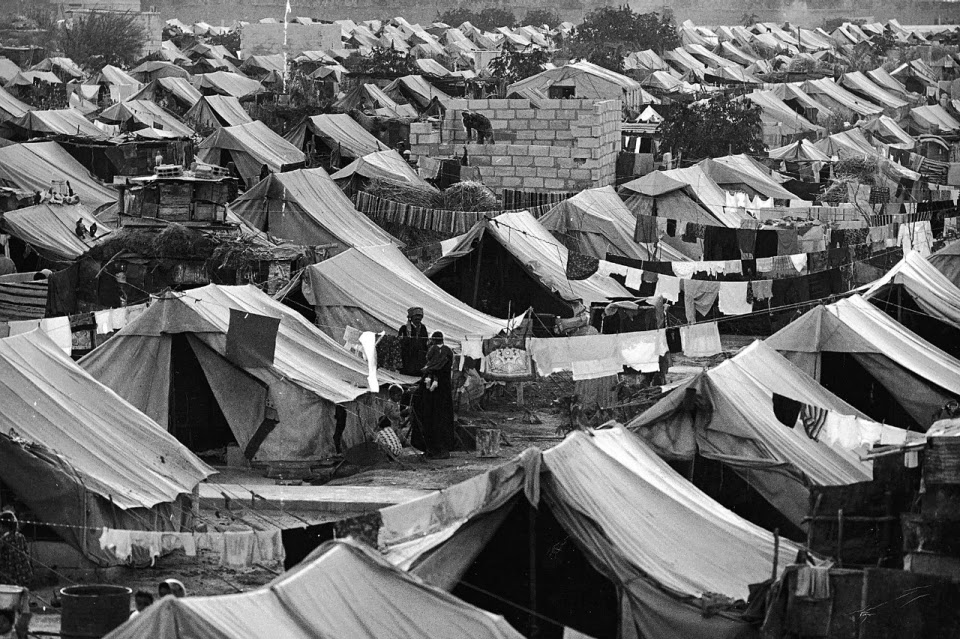settlements of indigenous Palestinian habitation inside the Green Line that almost-exclusively predate the 1948 establishment of the State of Israel. For the sole reason that their residents are Arab citizens, and not "Jewish nationals,” these villages have been excluded from master plans and, consequently, their existence is considered illegal. These “unrecognized villages” face demolitions and other bureaucratic means of forced removal amounting to internal population transfer.
These are hundreds of settlements of indigenous Palestinian habitation inside the Green Line that almost exclusively predate the 1948 establishment of the State of Israel. For no other criterion but that their residents are Arab citizens, and not "Jewish nationals,” Israeli (exclusively Jewish) planners have deliberately omitted these villages from all plans, foreclosing their benefit from basic services enjoyed by other settlements of similar and smaller Jewish populations with the State or even in occupied territories. Consequently, the Zionist-dominated planning regime considers their existence illegal. They face demolitions and other bureaucratic means of forced removal amounting to internal population transfer. Regional and national-level Israeli development plans call for most "unrecognized village” Arab populations to be transferred to what Israeli planners call "concentration points,” or rekuzim, (planned townships, or "concentration townships”) designated elsewhere in Israel where they would live in zero-growth zones with no secure land tenure and limited livelihood options.
From 1968 through the 1990s, the Government of Israel planned and built seven townships to absorb the Bedouin into urban-style townships in the Naqab (Tel Sheva, Rahat, Kusaife, `Arara, Hura, Segev Shalom, and Laqiyya). In the midst of this township resettlement process, in 1986 and again in 1989, the interministerial Markovitch Commission proffered a scheme to eliminate the "illegal” buildings in the Arab community across the country. The Markovitch plan called for the demolition of more than 11,000 Arab houses built after the Planning and Construction Law (1965), which the Commission selected as the statutory criterion for classifying them as illegal. Implementing the recommendations, GoI policy and planning law made all of those unlicensed Arab buildings illegal and subject to official destruction. That applies for 45 entire communities in the Naqab—and a greater number in the Galilee—that have come to be known as the "unrecognized villages.”
Israeli planning criteria for official recognition of villages are not published, but many long-standing and populous Arab villages in the Naqab remain "unrecognized,” while Jewish settlements notably smaller than the minimum population criterion are "recognized” with all services, rights and privileges. With such a double standard operating as criteria for official recognition of a settlement in Israel, it is clear that the operative criterion denying the Arab villages their statutory status and corresponding access to rights, including public services, is their lack of "Jewish nationality.”[1] The residents of the unrecognized villages are predicted to grow in number, while the state has provided no official criteria for the recognition of an indigenous Palestinian Arab presence within a "Jewish national” plan.[2]
[1] Joseph Schechla, "The Invisible People Come to Light: Israel’s ‘Internally Displaced’ and the ‘Unrecognized Villages’,” Journal of Palestine Studies (autumn 2001).
[2] The UN Committee on Economic, Social and Cultural Rights requested that the State of Israel explain its criteria for "recognition” of a human settlement and the corresponding rights and entitlements. However, the State of Israel has declined to answer that question until today. "List of issues to be taken up in connection with the considerationof the second periodic report of Israel concerning the rights referred to inarticles 1–15 of the International Covenant on Economic, Social and Cultural Rights (E/1990/6/Add.32),” E/C.12/Q/ISR/2, 5 June 2002, question 17.



